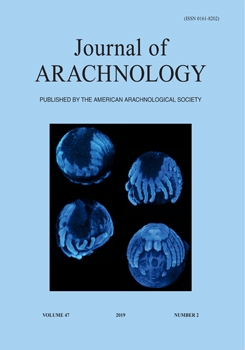Whip spiders (Class Arachnida: Order Amblypygi) are hypothesized to use multimodal sensory inputs to navigate back to their diurnal shelter after a night of activity, and chemical cues are thought to be involved. In two experiments, we investigated whether self-deposited chemical cues on a substrate could be used for shelter recognition by Phrynus marginemaculatus C.L. Koch, 1840. When given a choice, individual P. marginemaculatus spent more time in a shelter that contained filter paper it had previously contacted compared to a shelter with filter paper never contacted. In the second experiment, subjects showed no significant preference for a shelter that contained filter paper they had contacted compared to a shelter with filter paper that had been contacted by a conspecific. The data support the hypothesis that during the last stage of nightly navigation to their refuge, detection of self-deposited chemical cues, likely mediated by contact chemoreceptors, may facilitate home refuge recognition by P. marginemaculatus.
How to translate text using browser tools
16 September 2019
Self-derived chemical cues support home refuge recognition in the whip spider Phrynus marginemaculatus (Amblypygi: Phrynidae)
Patrick Casto,
Jillian Gosser,
Daniel D. Wiegmann,
Eileen A. Hebets,
Verner P. Bingman
ACCESS THE FULL ARTICLE

The Journal of Arachnology
Vol. 47 • No. 2
August 2019
Vol. 47 • No. 2
August 2019
arthropod navigation
homing
refuge recognition




